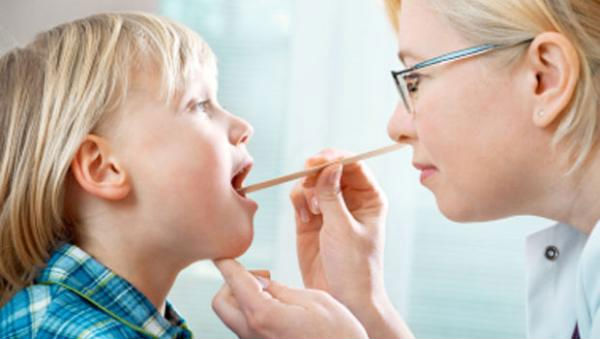
Are you feeling irritation, tenderness or itching in your throat? Then be careful. This may be a strep infection. Strep throat or streptococcal pharyngitis is a kind of throat infection which is caused by group A Streptococcus bacteria or Streptococcus pyogenes. Every individual and specially children and teenagers are affected by this medical condition. The streptococcal bacteria cause irritation in the throat and its surrounding areas. Generally, the tonsils, pharynx, esophagus (or food pipe) and larynx (or the voice box) are affected. Inflammation in any one of these organs can result in sore throat or strep throat.
Causes
The streptococcal bacteria which cause sore throat are extremely contagious in nature and can spread very easily through air-borne droplets when an affected person sneezes or coughs. Infection can pass on to a healthy person whenever he/she touches surfaces like doorknobs, bathroom objects or kitchen utensils, etc., that had been previously touched by an affected person. A person suffering from strep throat also experiences, headache, stomach ache, nausea, fever and chills along with a sore throat. It takes about 2 to 5 days for the bacteria to incubate and after that the signs and symptoms of strep throat appear.
Though anybody can catch an infection, but generally children falling under the age group of 5-15 years are most prone to this disease. The bacteria also infect children below 3 years but it does not cause inflammation or irritation in their throats. Early spring, late fall and winter are the most common seasons when you get a strep throat infection. Usually, it is not a very serious condition and an infected person recovers within 3 to 7 days without any kind of treatment. People can experience strep throat more than once in a year.
Symptoms
There are various symptoms of strep throat. The major symptoms are a red and sore throat, trouble and difficulty while swallowing food, fever, inflamed and tender lymph nodes in the neck region, appetite loss, rashes, nausea, uneasiness and malaise, weakness and white patches on the tonsils and throat.
There are some other additional symptoms associated with a strep throat infection. They are – neck and muscle pain, nasal congestion and nasal discharge, tongue problems, joint stiffness, unusual taste in the mouth and headache.
In addition to all these, the most significant symptom of strep throat is the absence of cough. The rashes appear due to the toxins released by the strep bacteria and is commonly known as scarlet fever. At first, the rashes appear on the face and neck region and then gradually moves down to other areas of the body. They generally appear 12 to 24 hours after the onset of fever and can last for several days.
Diagnosis
Various tests can be done to diagnose strep throat like:
1. Throat culture
This test is done only when the symptoms of strep throat appear and only after the recommendation of a doctor. For this, a sample (a cotton swab is used for the purpose) is send to the laboratory for culture. The bacteria are then identified and finally treatment is given.
2. Rapid strep test
This test is also known as the rapid antigen detection test (RADT). It is a very quick method of diagnosing strep throat. For this, a swab is used and sample is collected from the back of the throat. The doctor then uses an RADT kit which is readily available for testing. Though this is a very fast method but it is less precise compared to a throat culture test.
3. Blood test
For this, a blood sample is collected from the affected person and is send to the laboratory for testing. Here, a measurement of antibodies is done and is called anti-streptolysin O or ASO titer. This is not a very accurate test.
Treatment
Doctors generally prescribe antibiotics online for the treatment of strep throat, but nowadays, they are not recommended because of their less effectiveness. The most recommended treatment is gargling with warm salt water for 3 to 4 times in a day.
Antibiotics like penicillin and cephalosporin are also used for the treatment of strep throat. Penicillin V and penicillin G can be taken both orally and in the form of injections.
Prevention
By washing your hands regularly and by covering your nose and mouth while coughing and sneezing, you can prevent strep throat infection. Taking a doctor’s help in the early stage will also help in prevention. In addition to this, eating a well-balanced meal comprising loads of fruits and vegetables plus whole grains, healthy fat and lean proteins will help in boosting your immune system. Moreover exercising regularly and taking enough sleep will also help in improving your immunity and thereby preventing infections.
Frequently Asked Questions
1. Are most sore throats are caused by Streptococcus?
It is a myth. A vast majority of sore throats infections are caused by viruses and the most common type is the common cold virus.
2. If my child has strep throat, do I need to go to the doctor immediately?
Going to the doctor immediately is not required. By letting your child get enough sleep and rest at home will help. You can always visit the doctor but there is no hurry.




